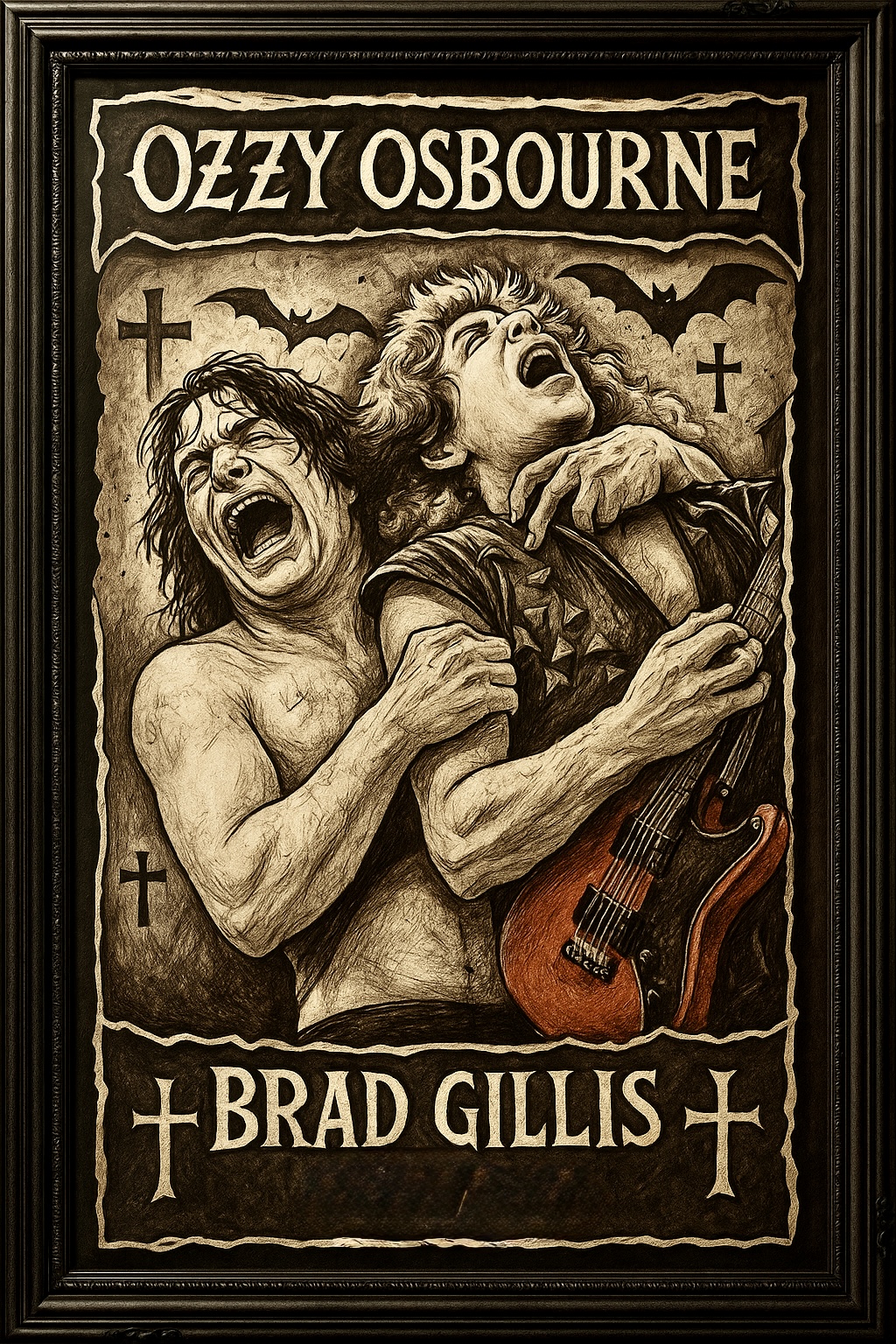
The 1980s were a golden age for heavy metal, and few figures loomed larger than Ozzy Osbourne. After being fired from Black Sabbath in 1979, Ozzy launched a solo career that would redefine him as a metal legend. Central to that reinvention were the guitarists who played beside him—Randy Rhoads, Jake E. Lee, and later, Zakk Wylde. But for a brief, electrifying moment in 1982, another name was in the mix: Brad Gillis.
Best known for his work with Night Ranger, Brad Gillis was tapped to join Ozzy’s band following the tragic death of Randy Rhoads. Gillis toured with Ozzy in support of Diary of a Madman, and the live album Speak of the Devil captures that lineup’s raw energy. But Gillis never got the chance to record a full studio album with the Prince of Darkness. Instead, he returned to Night Ranger, and Jake E. Lee was brought in for Bark at the Moon.
But what if things had gone differently?
A Shredder with a Twist
Brad Gillis wasn’t just a fill-in guitarist—he brought a fiery, aggressive style that blended metal’s edge with a melodic flair. His use of the Floyd Rose tremolo system gave his solos a wild, almost unhinged quality. On Speak of the Devil, his interpretation of Sabbath classics like “Children of the Grave” and “War Pigs” feels almost punk in its intensity, pushing the songs into a new, sleazier territory.
If Gillis had stuck around to record a studio album, it’s easy to imagine that record being Ozzy’s most sonically adventurous. Gillis’ fluid lead work and knack for crafting hooky riffs could have taken the post-Rhoads era in a very different direction—maybe a little less gothic grandeur and a little more Sunset Strip swagger, without losing that dark Ozzy vibe.
A Different Bark at the Moon?
Would the first post-Rhoads Ozzy album have sounded like Bark at the Moon if Gillis had stayed? Probably not. Jake E. Lee’s neoclassical style was in some ways closer to Rhoads, which made him a more obvious successor. But Gillis might have brought something entirely new to the table—something heavier on groove, flash, and melodic hooks.
Think about Gillis’ work on Night Ranger’s Dawn Patrol. Now imagine that precision and flair applied to a track like “Rock ’n’ Roll Rebel” or “Centre of Eternity.” Songs might have leaned more into galloping rhythms and slick harmonies—perhaps even blending more American hard-rock sensibilities into Ozzy’s traditionally British, doom-tinged sound.
Somewhere in an alternate universe, there’s an Ozzy Osbourne album from 1983 ripping through the speakers, featuring Brad Gillis at his peak.
The Lost Legacy
We’ll never know what that album would have sounded like, but the idea remains a tantalizing “what if” in rock history. Gillis had the chops, the charisma, and the creativity to leave a lasting imprint on Ozzy’s discography. Had he stayed, it’s possible he would be remembered as one of Ozzy’s definitive guitarists—not just a brief chapter in between legends.
Maybe we would’ve gotten a Gillis-penned Ozzy anthem played endlessly on classic rock radio. Maybe Night Ranger wouldn’t have become the band we know today. Maybe—and here’s the wildest thought—Speak of the Devil wouldn’t be a cult classic, but the launching pad for one of metal’s most unexpected and iconic guitar partnerships.
In the end, history took a different path. But in some alternate timeline, Brad Gillis and Ozzy Osbourne made an album that melted faces and rewrote the rules. And honestly—I’d love to hear it.
Join the conversation: What do you think an Ozzy–Gillis album would have sounded like? Share your take in the comments or email heavymetalbuzz@yahoo.com. Follow along at Facebook @HeavyMetalBuzzRadio.